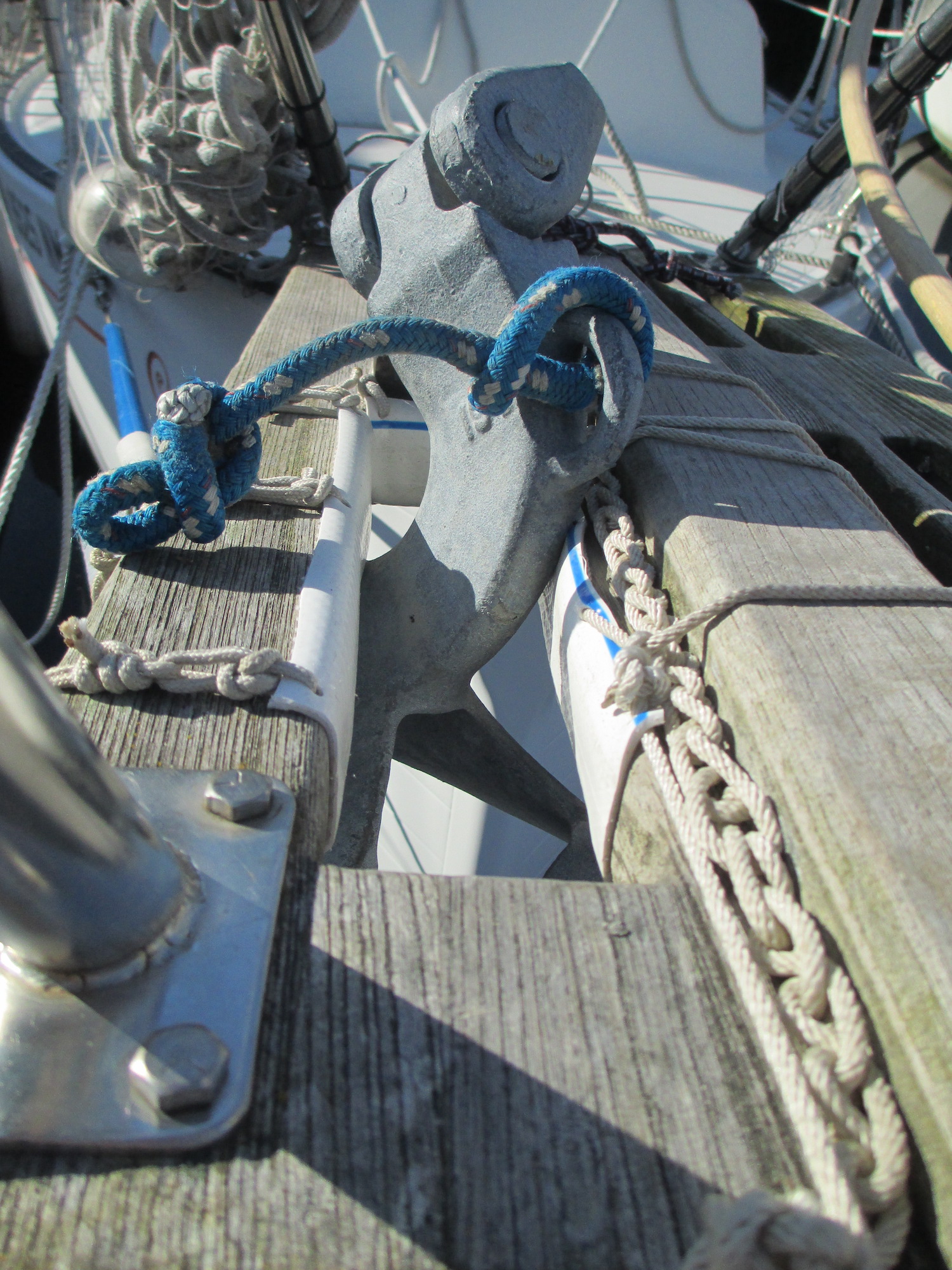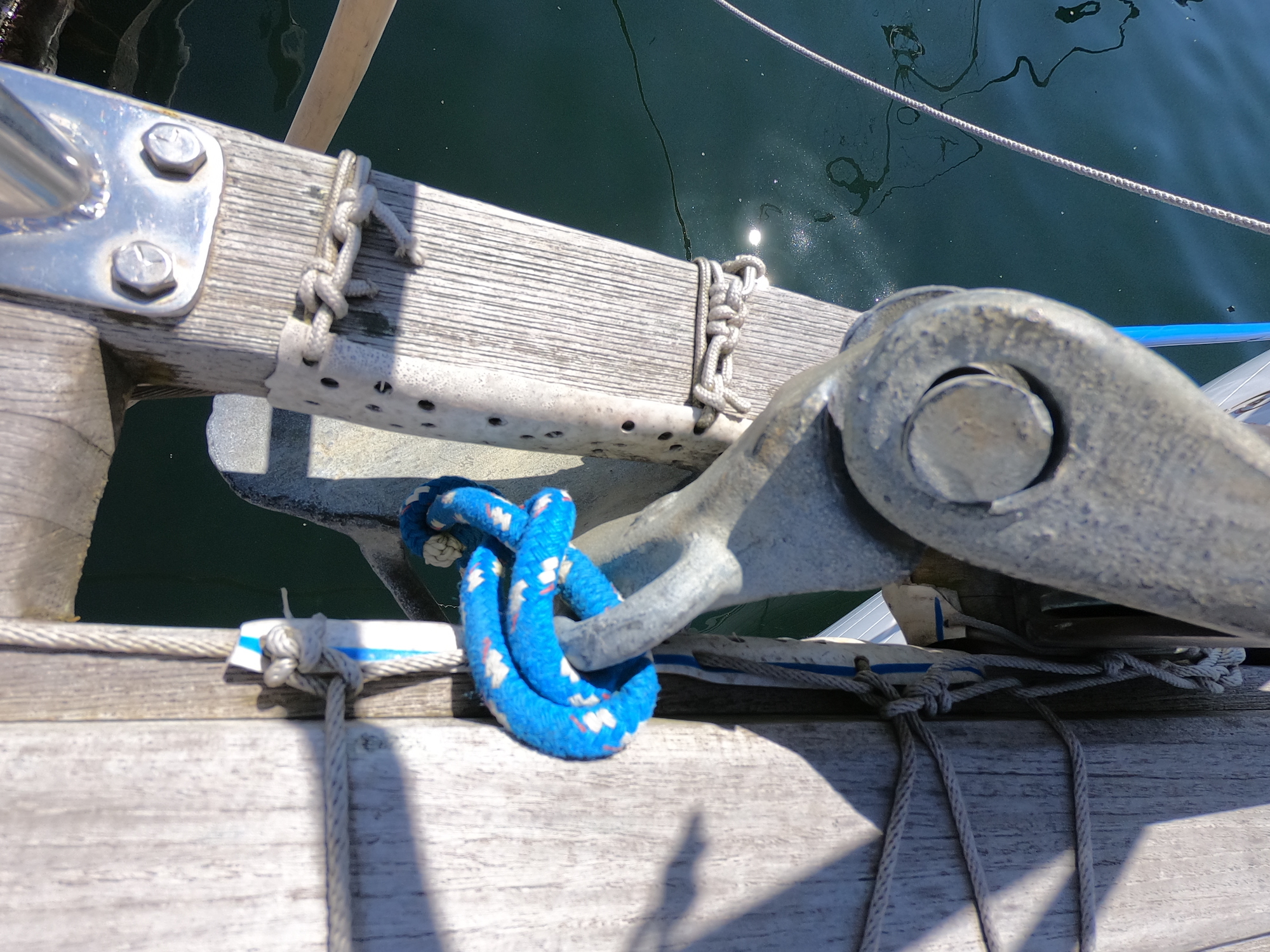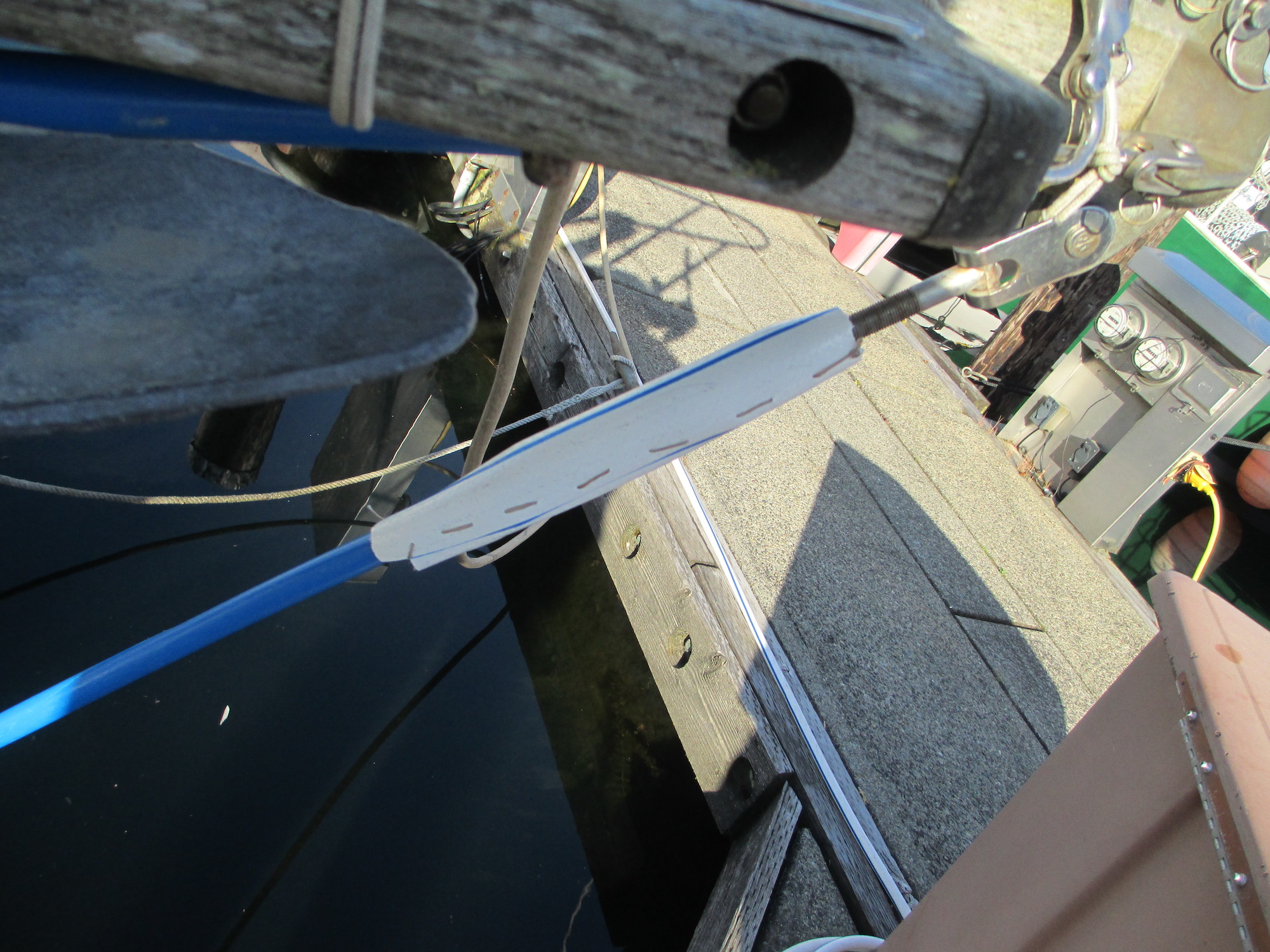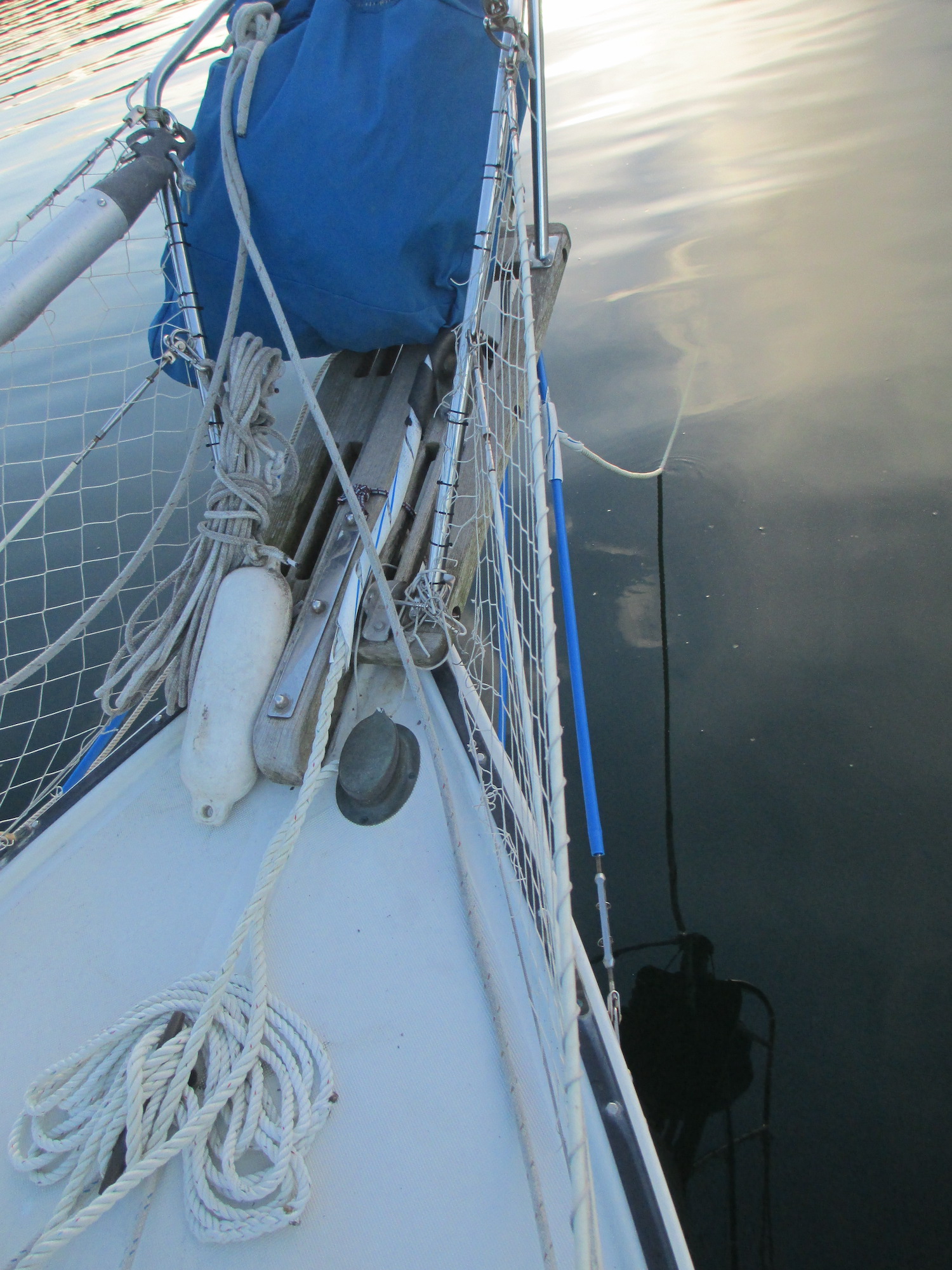
Don’t Chafe on Me
Earlier this year we shared some of The Resourceful Sailor’s tips on chafe gear. In this second installment we bring you some more simple and very handy tricks to keep you safe from the chafe.
How do I protect my boat from the anchor gear and vice versa? As I committed to anchoring more on my Pacific Seacraft Flicka 20, Sampaguita, this became a pressing question. Due to weight considerations and my cruising grounds, I opted for 30 feet of chain, with 300 feet of nylon line, for my anchor rode. After some practice sessions, I pinpointed the chafe spots and aimed to eliminate them.
Sampaguita has a bowsprit with a bare teak platform, and this is where the anchor is stored. It sits on a bow roller, and the anchor is deployed and weighed through a slot in the platform. The chafe points on the platform are where the anchor rests in the stowed position, and where the anchor rode rubs when taken in.

My first thought was to add stainless steel or aluminum chafe guards on the contact spots. Small pieces would be easy and inexpensive to come by, but there were a couple of issues that concerned me. First, I would have to use screws in the platform, making entry points for water, as well as being destructive. Also, water collecting and sitting under the metal pieces was a concern. Teak is rot-resistant, but not rot-proof. And the oils in the teak prevent sealants from retaining long-term adhesion.
So I went with a low-tech approach. I had some old vinyl water hose that I cut to fit. Using a leather punch, I added holes to these to allow them to “breathe” and the wood underneath to dry. I used nylon cord to tie these in place. This would be non-destructive, so if it didn’t serve its purpose, there was no harm done.

While swinging on the hook, the bobstay and the bowsprit shrouds are the problem spots. In the Pacific Northwest, we often have currents to contend with in addition to the wind. When these are in opposition, the boat will often sit in awkward, sometimes side-to positions. Plus, with nylon rode and a Flicka’s windage at the bow, Sampaguita wants to “sail” back and forth at anchor. In either case, the nylon rode rubbed on the standing rigging.
I went to the local hardware store, and for $5.47, I purchased several feet of rigid blue nylon tubing. I cut this to lengths for the bobstay and bowsprit shrouds, then spiral-cut them lengthways and slipped them on. They fit loosely enough to air-dry, and looked good too, matching my blue canvas. I then added a piece of vinyl hose to the upper turnbuckle of the bobstay, stitching it on with waxed twine to cover the sharp edges.


While the above are permanent installations, there is a final addition to the setup that I add after I set the anchor, and remove when I weigh it. I have a four-foot length of spiral-cut water hose that I add to the rode. It extends from the hawser, through the platform, and beyond the bobstay. Then, a shorter length of automotive hose that I put over that for extra protection against the bow roller and the bobstay, in case conditions cause a lot of tension on the rode.
I added these chafe guards in spring 2016. They are still intact, serving their purpose after somewhere around one hundred evenings at anchor in a large variety of conditions, some of them quite extreme. I haven’t experienced any chafe in these areas, and a bonus is reduced anchor-rode noise in the cabin. The one guard I have had to readjust on occasion is that just below the anchor roller, in place to protect the platform as the many feet of anchor rode are pulled up. It wants to shift when the friction is high. Adding the final hoses after a long day is tedious, but peace of mind is the reward.
When you need to come up with economical solutions, The Resourceful Sailor hopes to stimulate the brain on how to make this happen. Remember, make your solutions safe and prudent, and have a blast.
